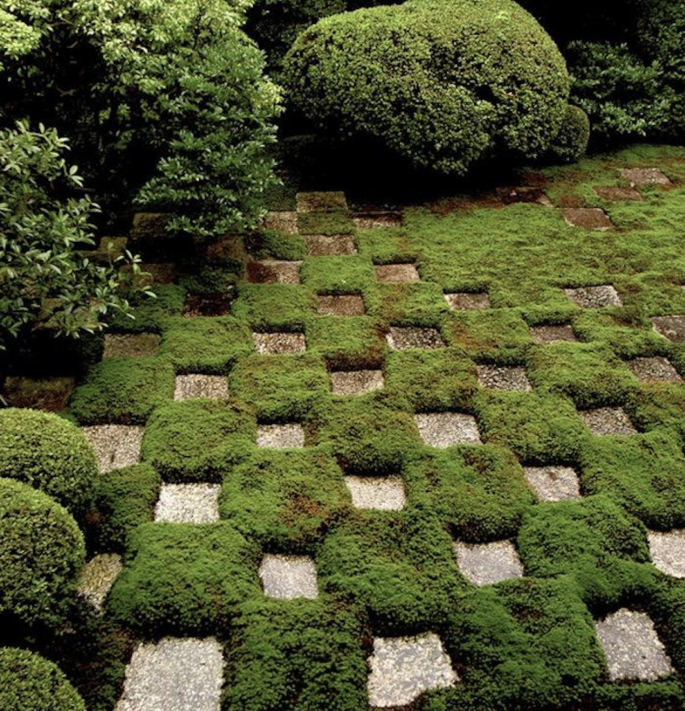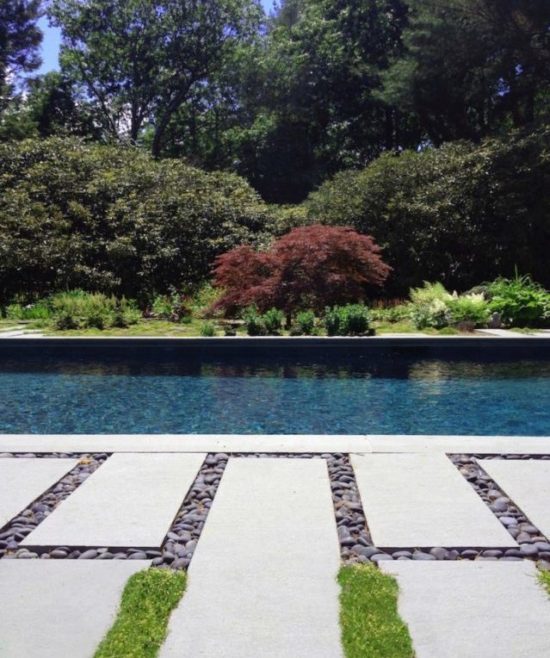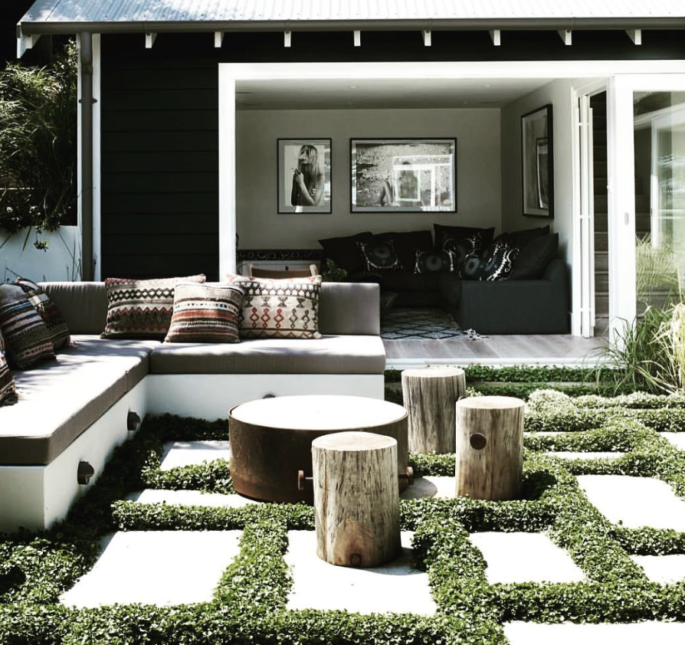Too often pathway gaps are neglected and become a home for weeds. But where some may see awkward spaces between stepping stones, I see potential. Plants between pavers can soften hard lines, adding a lush, living element to a design.
It’s relatively simple to fill the cracks between pavers with creeping plants that will stay low, won’t mind being squashed a bit, and may even be fragrant. Ground cover can triumph over weeds, too. Read on for everything you need to know:
How do you choose a ground cover to grow between pavers?
As a landscaper, I routinely feel like a boss on the plant employee search, hunting for highly qualified plant candidates for the position of ground cover. Listed below is my required criteria. Height: A plant should be low growing, raging in height from basically flat to 2 inches tall. Anything taller could be trip pedestrians and make the pavers look as if they are sinking, even drowning. Rule of thumb: the larger the scale of the pavers, the taller the filler plants can be. Foliage: The ground cover should be vigorous (but not invasive) and dense like a carpet to smother competing weeds and cooperatively traverse the spaces for continuity. Hardiness: A plant that grows between pavers should be tough and durable to withstand occasional trampling by foot or paw. No-Fuss: Ground cover plants for pavers must require as little maintenance as possible. A total given. Design: The ground cover needs to meet the design needs of foliage color, texture, and form. The choice also should complement the colors and textures of the pathway material rather than compete with it, and be congruent with the current landscape theme.
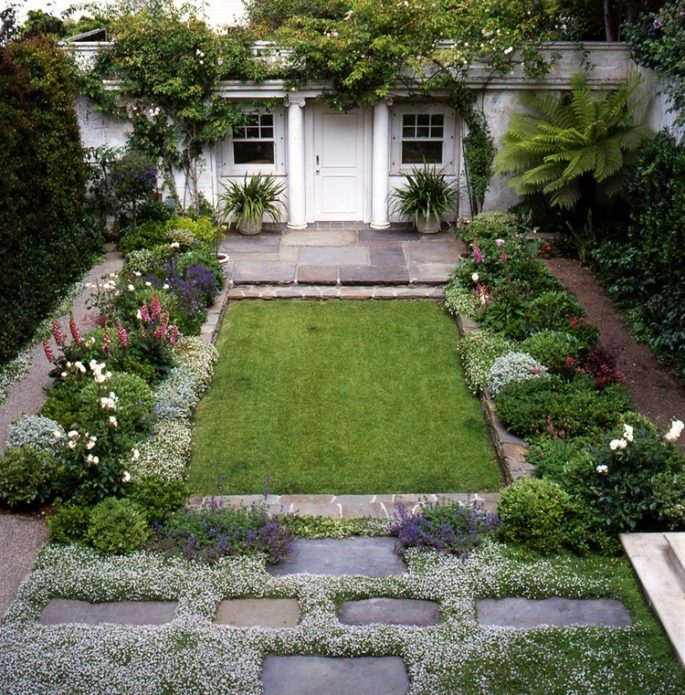
White blooming Isotoma grows in a pathway, framing pavers with texture and color in a California garden designed by Elizabeth Everdell. Photograph courtesy of Everdell Garden Design.
What are the best plants to grow between pavers?
The options below are by no means the only ones, just some of the popular ones, and you have different options depending on whether your path basks in sun or hides in shade.
Full Sun
Creeping thyme (Thymus spp): Considered one of the finest ground covers for filling in between flagstones. It meets all of the criteria of a good plant employee. This petite herb comes in many varieties, all with tiny, rounded fragrant leaves in shades of dark green, lime green, and even yellow with a white edging. Elfin or woolly thyme are especially good varieties that will grow in difficult soils, stay flat and are frighteningly easy to grow.
Dymondia (Dymondia margaretae) is a good alternative. Its phenomenally flat, tidy appearance bears slender leaves that are green on top and gray underneath. A slight upward curl on each leaf edge provides a frosted, two-tone look and it occasionally bears small yellow daisy flowers.
Part Sun
These creepers are content with coastal full sun to partial shade. Inland, all prefer some protection from the hot, mid-day sun. Chamomile (Chamaemelum nobile) is a fluffy perennial with a meadowy appearance. Its small, white daisy flowers rise above soft, apple-green, ferny leaves. Downside: this plant requires moderate water and a trim after flowering.
Jewel mint of Corsica (Mentha requienii) also requires regular water. It forms a low mat of miniature green leaves that resemble moss, and if you walk on them they will release minty wafts reminiscent of toothpaste.
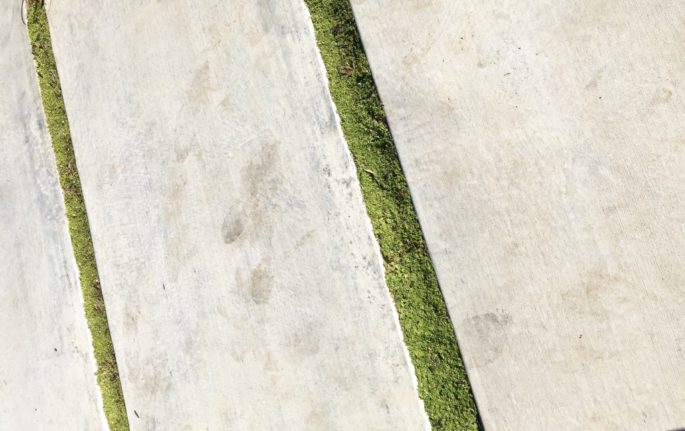
Corsican mint set between concrete pavers, awaiting to release its minty fragrance.
Blue star creeper (Isotoma) has starry, pale-blue flowers atop a bed of very flat, bright-green leaves. It blooms most heavily from spring through summer, with occasional flowers appearing the rest of the year. Although looking delicate, this ground cover is quite tough.
Irish moss (Sagina subulata) is not moss, technically speaking, but sure resembles it. A longtime favorite filler in Europe, this perennial grows quickly into an impenetrable green and mounding rug of almost uniform texture. The textural effect is nice, and the plants require virtually no maintenance—double nice.
Lawn grass. Yes, turf grass makes an excellent filler between your pathway stones, especially if they are on the larger side and are set a good distance apart. Downside? Grass requires a fair amount of mowing, fertilizing, and watering. However, with smart design and proper paver height placement, you can literally mow right over the pavers as if they weren’t there.
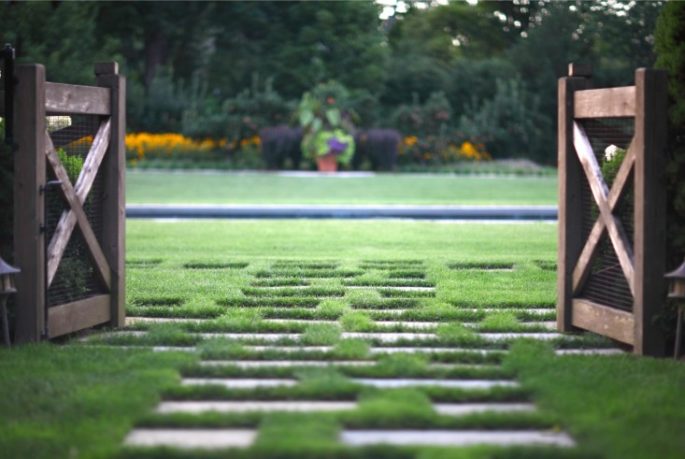
Photograph courtesy of Janice Parker Landscape Architects.
Shade
Baby’s tears (Soleirolia soleiroli) is the classic verdant creeper that with enough moisture perfectly runs through crevices.
Sweet woodruff (Galium odoratum) bears larger leaves than many creepers. Small, white flowers bloom from late spring through the end of summer, then go to seed (translation: an army of volunteers may follow and spread everywhere).
Mondo grass (Ophiopogon japonicus) is an excellent choice when you want a dark green carpet year-round. Dwarf mondo grass is an especially good choice that I routinely plant in all types of landscapes from Asian to modern. Slow, but well worth the wait.
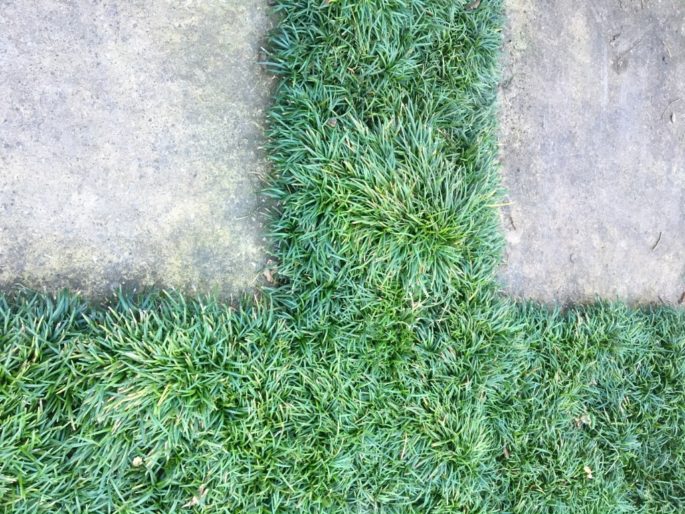
Mondo grass nicely resembling a green Flokati rug. Photograph by Kier Holmes.
How should you prepare soil for plants between pavers?
Stepping stones, flagstone patios, and pavers are often set on compacted soil, compacted base, or several inches of sand, which obviously is not ideal for planting. The key to ground cover success is to give plants enough loose, nutrient-rich soil between the stones, preferably at least 6 inches deep for roots to grow and with gaps at least 2 inches wide.
If you decide to plant from flats (an economical choice), I recommend using scissors to cut apart 2-to-3-inch-wide chunks that contain several plants and their roots. Space the chunks 6 to 9 inches apart in the ground. Also, remember to cover the bare spots with some light soil or compost that will help retain surface moisture until the plants fill in.
Next, you’ll need to irrigate the plants. The solution might be running ¼ inch in-line drip between the pavers or maybe line the path with pop-up micro-sprayers or even adjust nearby sprinklers so that their over-spray covers the plants.
